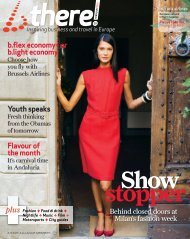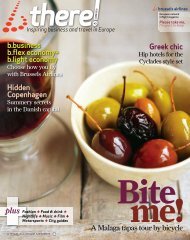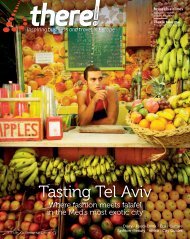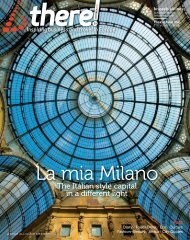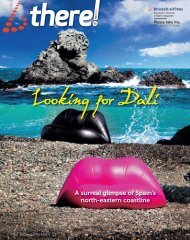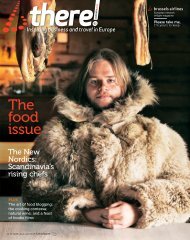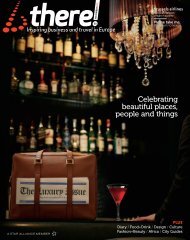november-2012
november-2012
november-2012
Create successful ePaper yourself
Turn your PDF publications into a flip-book with our unique Google optimized e-Paper software.
lustrous, purple-blue lizard. Many of the leathers come<br />
from animals farmed for their meat; others, like the cobra,<br />
are available only in restricted quantities each season. There<br />
are fish skins, too: an iridescent, unexpectedly lovely salmon<br />
skin and a section of paper-thin ray skin, patterned with<br />
tiny, gleaming circles.<br />
Once a skin has been selected, the process can begin. First,<br />
the coupeur will check the leather over and choose where to<br />
cut the pattern parts, envisaging how the grain and colour<br />
will match up when the bag is put together. The parts are<br />
then cut out and the leather thinned and refined, ready to<br />
be assembled and stitched together by a three-strong team<br />
of craftsmen. It’s a painstaking process, particularly when<br />
it comes to a bag like the ‘Brilliant’: made from 64 individual<br />
pieces of leather, it is assembled inside out (passepoil) to<br />
hide the stitching, then lined in butter-soft leather.<br />
FLY TO brussels from 50 european destinations. brusselsairlines.com<br />
LUXURY CRAFTSMANSHIP<br />
Clockwise from top left: Patricio Sandoval, an expert in exotic skins, polishes a<br />
section of alligator skin – a delicate material to work with, but also his favourite;<br />
ostrich-skin pattern parts for the ‘Brilliant’ bag, each one cut by hand; exotic leathers,<br />
like this cobra, are available only in restricted quantities each season; a roll of toile<br />
de cuir, intricately woven from different leathers and made exclusively for Delvaux<br />
“They say a Delvaux bag is as beautiful inside as out,<br />
and it’s true,” says designer Julie De Taeye, picking up her<br />
own handbag – a capacious ‘Brilliant Grand Modèle’ – to<br />
demonstrate. “It’s all about the stitching and finish, like using<br />
the fer à filet to burn a line between the stitching and the<br />
edge of the leather. Even if we could make the bag €300<br />
cheaper by omitting a single step, we wouldn’t do it. There<br />
are no concessions on how the bags are made, and never will<br />
be – it’s the foundation on which the entire company rests.”<br />
At the next workstation, Mohammed Benelcaïd is putting<br />
the finishing touches to a bag, carefully gluing a piece in<br />
place. He started work here in 1973, “knowing nothing”; now<br />
he is one of the master craftsmen. As such, he will check<br />
that the finish is perfect before stamping his seal on the<br />
carte d’authenticité that accompanies every bag. “People<br />
often keep the carte,” he says. “Once, when a lady brought<br />
<strong>november</strong> <strong>2012</strong> 33



